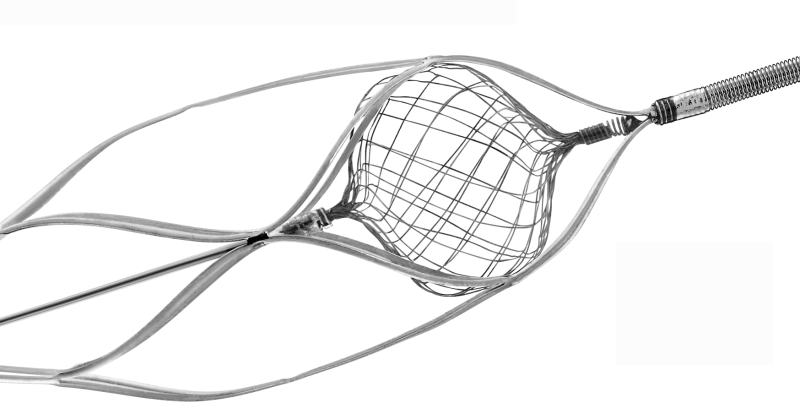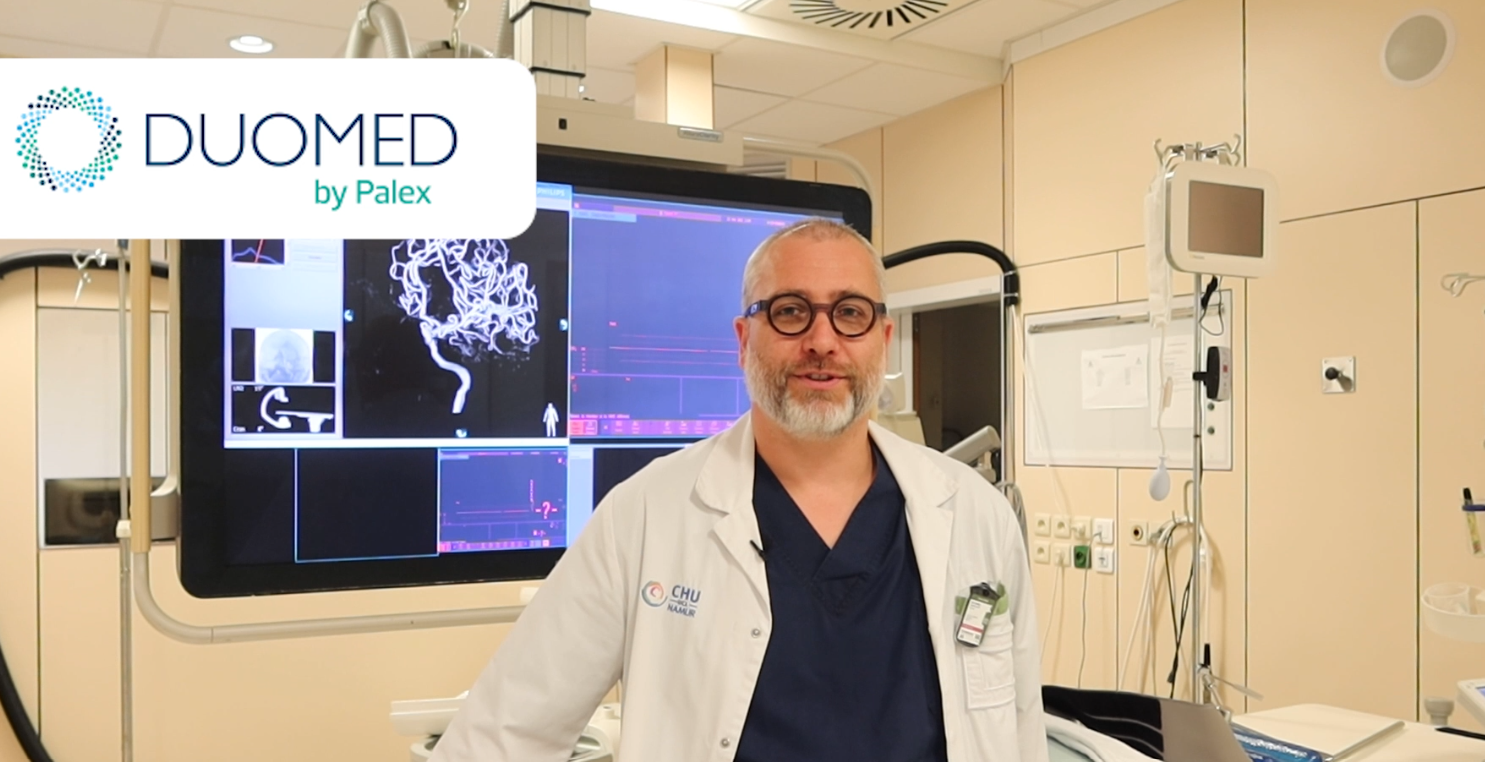In this video, Dr. Gelmini, interventional neuroradiologist at the University Hospital Center of Namur in Belgium, takes you into the angio suite where acute strokes are treated. He demonstrates how mechanical thrombectomy with the Vesalio NEVA NET™ stent retriever can rapidly restore cerebral blood flow and thereby support clinical recovery.
Insights from Dr. Gelmini on Vesalio NEVA NET™: A new step in neurovascular care
From pathology to procedure: why speed matters
Interventional neuroradiology covers a wide range of pathologies, from vascular malformations and aneurysms to acute ischemic stroke (AIS).
In an ischemic stroke, a thrombus obstructs a cerebral artery, thereby compromising blood flow to brain tissue.
Thrombectomy makes it possible to remove this clot endovascularly and restore circulation.
Studies and clinical experience confirm two fundamental principles emphasized by Dr. Gelmini:
• Rapid recanalization is crucial for clinical recovery.
• First-pass success (achieving recanalization on the first attempt) is associated with better clinical outcomes.
From NEVA to NEVA NET™: the newest generation in thrombectomy
Dr. Gelmini has been working with the NEVA family for 6 years. He first gained experience with earlier NEVA generations at CHU Reims. His reasons for continuing to use the system include:
• Ensuring optimal clot apposition with sufficient radial force, without loss of control during the procedure.
• The “drop-zone” design supports controlled clot capture and traction.
NEVA NET™ is the latest generation and features an integrated distal filter. During stent deployment, micro-emboli may be released. The NET filter is designed to capture these micro-clots and help prevent distal embolization, particularly in vessels that are difficult to reaccess.
What this means during the procedure
According to Dr. Gelmini, NEVA NET™ provides the following practical advantages:
• A higher likelihood of first-pass recanalization thanks to the combination of radial force and the distal filter.
• Consistent performance with hard clots and calcifications, where additional radial force is required.
• A focus on clinically relevant outcomes by not only reopening the main vessels, but also intercepting micro-emboli that could otherwise lead to neurological damage.
Continuous product improvement driven by clinical feedback
Dr. Gelmini notes that Vesalio actively listens to user experience. While earlier generations were stiffer in highly tortuous vessels, the current generation has been designed with increased flexibility without compromising radial force.
Partnership with Duomed
Dr. Gelmini expresses strong satisfaction with the collaboration with Duomed:
• Support tailored to the rhythm of the clinic, with full understanding of emergency situations.
• Fast and accurate on-site presence in the angio environment at critical moments.
• Continuous focus on solutions that further optimize patient safety and procedural efficiency.

Key benefits
- Distal NET filter: captures micro-emboli to help reduce distal embolization.
- High radial force + navigability: provides a strong grip on various thrombus types, including calcified ones.
- More first-pass reperfusion: increases the likelihood of a fast, effective reopening on the first attempt.
- Clinical focus: delivers not only a strong angiographic result but, most importantly, better patient outcomes.
- Evolving design: incorporates iterative improvements based on user feedback.
- Robust clinical support via Duomed: responsive, pragmatic, and patient-focused.


